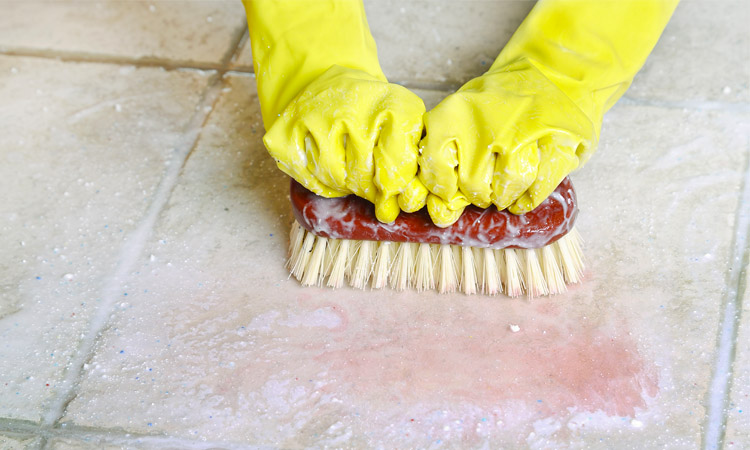

As winter draws to a close, many of us start thinking about refreshing our homes with a good décor update, renovation, junk purge or a nice, deep cleaning. When it comes to spring cleaning, in particular, most Americans wouldn’t think twice about potential hazards.
However, in older buildings constructed before 1980, cleaning can have complications. Asbestos, a mineral that causes mesothelioma, a deadly cancer, was widely used to build homes in the 20th century. Manufacturers knew of the dangers, but failed to warn workers and consumers.
Even today, asbestos is not fully banned. As a result, asbestos remains undiscovered in countless homes. Disturbing asbestos-containing products can present lethal hazards to health. The Environmental Protection Agency recommends that homeowners leave undamaged asbestos-containing products alone and take every precaution to avoid damaging them.
If you know where to look for asbestos in the home, then the hazards become easier to avoid. Here’s a list of household items and areas you might need to treat with caution to prevent asbestos exposure.
1.) Insulation
One quality that made asbestos so coveted in construction was its strong resistance to heat and flame. As such, asbestos was often used to insulate attics, floors and boilers. When cleaning or storing belongings in areas containing insulation, look out for a gray-brown, or silver-gold, pebble-like material: This may be vermiculite, an asbestos-contaminated substance.
2.) Floor Tiles
Asbestos was also popular for its durability and was added to some vinyl floor tiles and tile adhesives to prevent wear and tear. If possible, avoid sweeping, vacuuming or dusting vinyl tiles that appear cracked or worn as the dust and debris may contain carcinogenic asbestos fibers. Never use power strippers on a floor that may contain asbestos.
3.) Piping
Similar to boilers and other insulated products, homes built before 1972 commonly contained piping coated in asbestos. This was intended to reduce heat loss, prevent freezing and protect surrounding surfaces from heat in the pipes. This pipe wrap can be found in basements or crawlspaces. If found, it should not be disturbed and, if damaged, should also be avoided.
4.) Roofing and Siding
If cleaning outdoors, be wary of roofing or siding panels. These were made with asbestos to survive the elements as well as for fireproofing and insulating buildings. Roofing and siding was designed to be long-lasting and may not be hazardous if in good condition, but signs of damage should not be overlooked.
5.) Ironing Board Covers
This is one of several household products that used to be manufactured with asbestos to provide protection from heat. Be mindful of signs of wear in old covers, or similar items such as fireproof gloves. If you suspect your ironing board cover may contain asbestos, do not remove it! Instead, contact your trash company for proper disposal instructions. Asbestos-containing products should never be put directly in the trash.
6.) Hair Dryers
Hair dryers, too, were formerly built with asbestos to minimize risks of fire or heat damage. Unbeknown to their owners, they actually increased risks of asbestos exposure by blasting its fibers throughout the air. In the ’70s, the Consumer Products Safety Commission (CPSC) began recalling asbestos-containing hair dryers, but some may still be stored in homes or distributed as antiques.
7.) Textured Ceiling
By now, most people have heard about the dangers of “popcorn” ceiling, a type of textured ceiling that was popular before its ban through the Clean Air Act of 1978. This is distinguishable by its bumpy appearance, designed to conceal imperfections in handiwork. Asbestos testing specialists can determine whether asbestos is present in your home’s ceilings.
8.) Electrical Panels
Electrical panels are devices used to distribute electricity through the home from its main power supply. Since electrical currents produce heat, and therefore potential fire risk, asbestos was used in panels as a fire and electrical retardant. Although this was meant to make electrical systems “safe,” they are a dangerous site for asbestos exposure in older homes.
Since the 1980s, the use of asbestos in building construction has declined. Nevertheless, remember that even newer homes may contain the above items. Manufacturers of asbestos-containing products were allowed to use up inventory years after prohibition, and many uses of the substance remain legal to this day.
Also, it’s important to remember that the average person is not qualified to assess whether a product contains asbestos. If you suspect the presence of asbestos in your home, consult an asbestos expert before touching or disposing of any questionable items.




